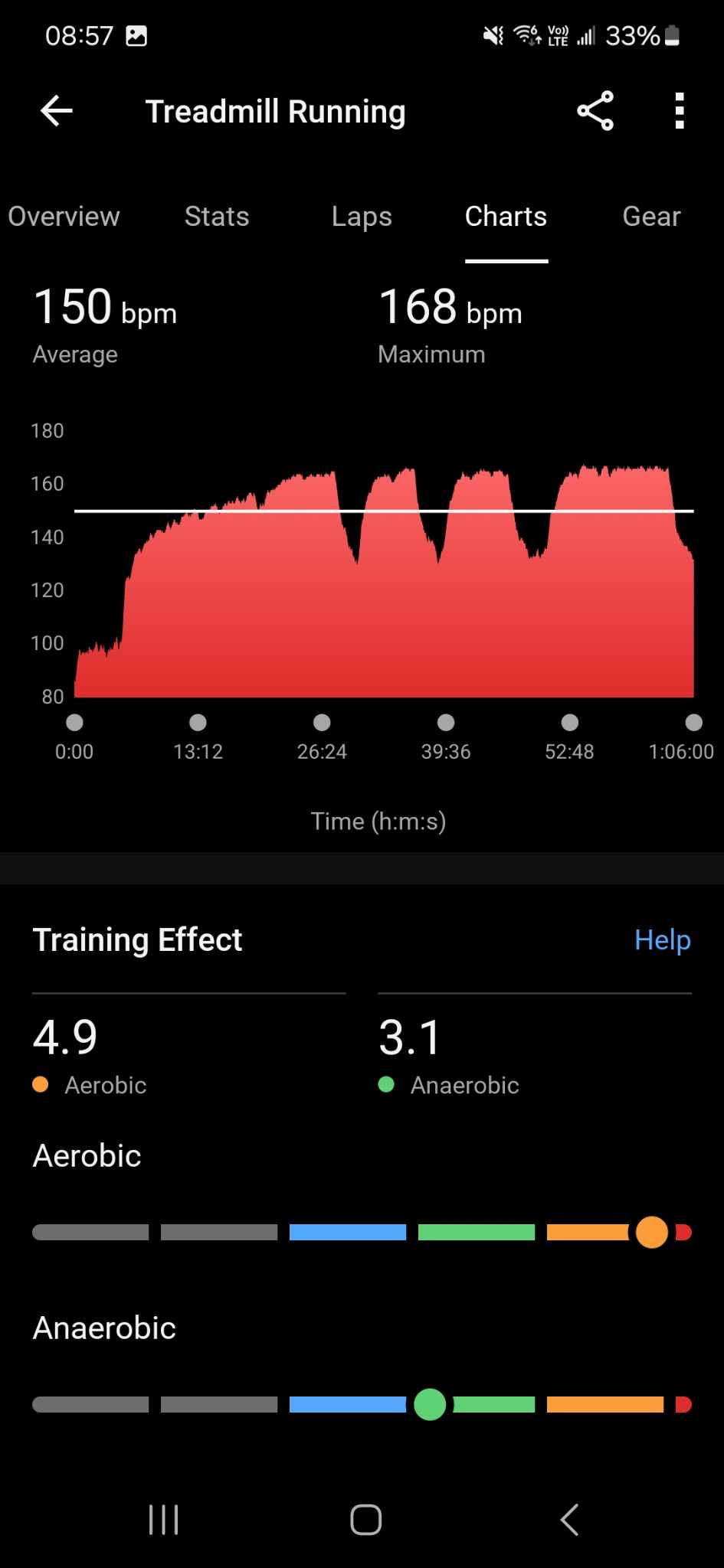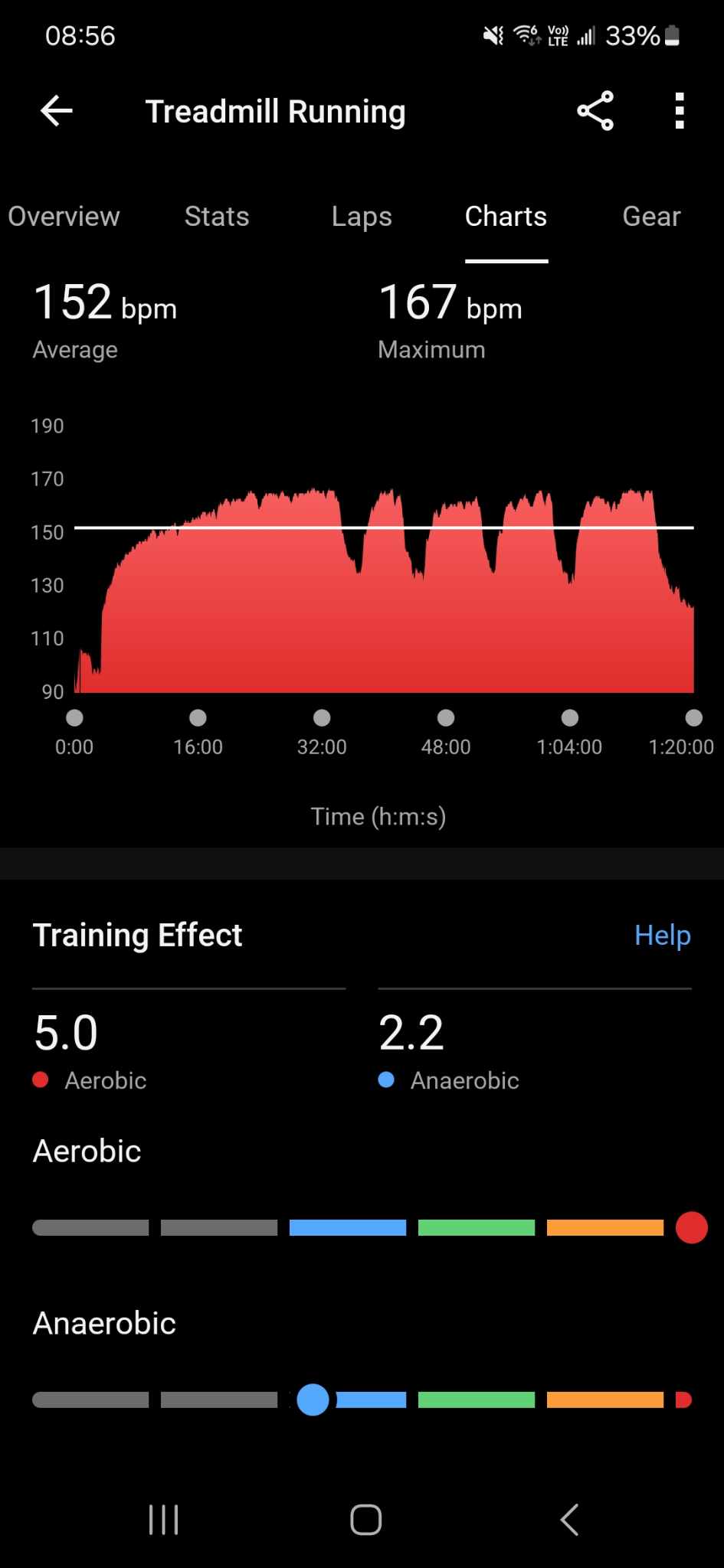I ordinarily exercise on the rowing machine and the elliptical. Recently picked up jogging on the treadmill and some things don't make sense to me.
Let's start with this one. Can someone speculate as to why Exercise 1 gives me substanttially higher Anaerobic benefit than Exercise 2 ?
Exercise 1:

Exercise 2:



